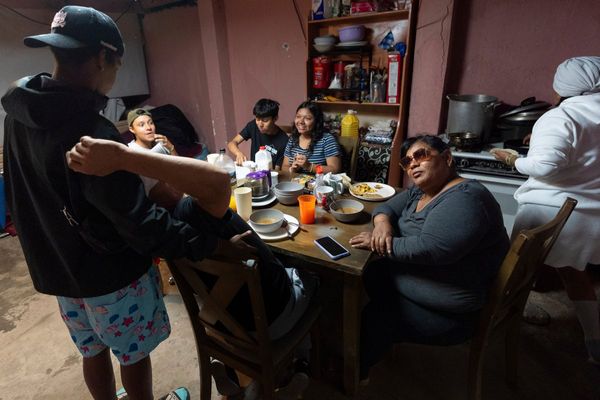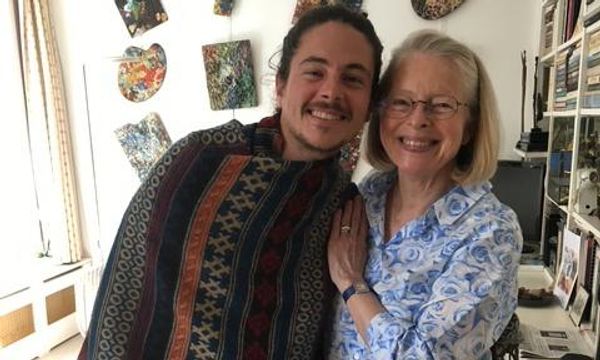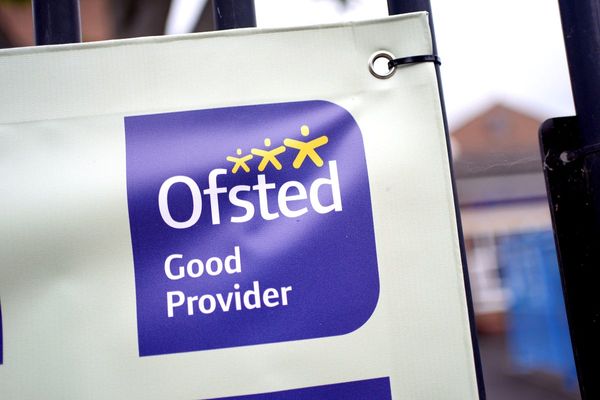
It’s not often we see portraits of our childhood distress. When families brought out cameras in the late 60s, it was usually to capture smiling faces on special occasions, such as Christmas and birthdays. But here I was, 18 months old, in two pages of a yellowing national newspaper, dated January 1969.
The first, under the headline “Suffer little children”, showed me in tears as I looked away from the camera into the distance as if I was looking for someone. In the second, I was inconsolable again, looking up and still waiting for a grownup to pick me up and comfort me. That one came with the words: “Be grateful that little girl isn’t yours. She so easily could be!”
The images were part of a national campaign for the Mental Health Trust, to highlight the impact of mental illness on children. I was too young to remember these pictures being taken. At the time, my father, Kim, was a flamboyant creative director in London, starting his own ad agency. So maybe I was just the most convenient choice as a model for his new campaign.
Although I had been dimly aware of the photos growing up, I hadn’t seen them for years. Now, in 2011, they were being handed back to me by a relative as part of a pile of childhood mementoes my grandmother had kept of me.
Looking at the pictures at home, I felt shocked and then uneasy. By now I had two young children, aged six and nine, and the pictures took on a very different meaning.
Of course, I knew that toddlers cry. But now I wondered how long I had been left under the studio lights to get enough shots of me looking sufficiently distressed. Beyond that, I felt angry at the loss of trust I saw in the eyes of my toddler self – and which I still recognised.
My father died in 1997 after a long wasting illness, polymyositis. So, although I assume he was in the studio with the photographer, he’s not around to give me any more answers. And the photos date back to a painful period in my mother’s life, so I’ve found it difficult to press her on the details.
But these pictures felt like more than brief snapshots from my early life. The loss of hope in my eyes still felt familiar. For one thing, my parents’ volatile marriage had been punctuated by rows and separations from the moment I was born. Throughout childhood, I witnessed explosive arguments that left me feeling scared and powerless. Often the adults were too caught up in their own chaos to notice.
When my parents finally went their separate ways and divorced when I was 10, I lost the only stability I had known: my home and school friends. My father moved to Australia and my mother to the US. For two years I lived with her and her new partner, while shuttling to Melbourne and Sydney during school holidays. Then I agreed with my mother that boarding school was the best option for me.
So, one of the lessons I learned early was that it wasn’t safe to feel happy and secure because something outside my control would come along and ruin it. I grew up into an adult who was constantly scanning the environment and expecting bad things to happen.
Even on my wedding day in 1999, instead of feeling joy, I felt distant, dissociated and numb on what was supposed to be one of the happiest moments of my life. At celebrations, parties or Christmas, I felt as if I was on the outside, like I was looking in from the other side of frosted glass. My husband, Anthony, and I went on to have two lovely daughters. But even when life was going well for me, happy family moments felt “cringy”.
When I delved deeper, I realised I could also hear the voice of an invisible bad fairy on my shoulder whispering: “If you feel happy now, there’ll be a price to pay later.”
That changed when I wrote a book called Feeling ‘Blah’?, which analyses why joy is more difficult to find in the modern world. I tried out somatic therapy, which looks at the way our nervous systems are wired when we are young children and how this can create physical sensations of apprehension in our bodies that persist even in adulthood.
When I saw the somatic therapist, he told me: “Rationally you know that you have got a partner and children who care about you, and you should be able to enjoy that. It’s just that your body hasn’t got the message.”
As I kept researching the book, I discovered there was even a name for this anxiety about happiness: cherophobia – from the Greek words for fear and celebration. Now I have been able to name cherophobia, I have been able to notice as soon as that jittery feeling starts to set in again.
Instead of resisting or walking away from good experiences and happy feelings, I allow them in. That doesn’t mean I don’t still feel physically uncomfortable – and often still cry – when I look at those pictures of myself as a toddler. But I have stopped being angry with the adults who didn’t pick me up to comfort me. Now I imagine myself as the grownup who goes to cuddle that small child – and tell her that everything’s OK.
• Feeling ‘Blah’? Why Life Feels Joyless and How to Recapture Its Highs by Tanith Carey is out now in paperback (Welbeck, £12.99). To support the Guardian and the Observer, order your copy at guardianbookshop.com. Delivery charges may apply.







